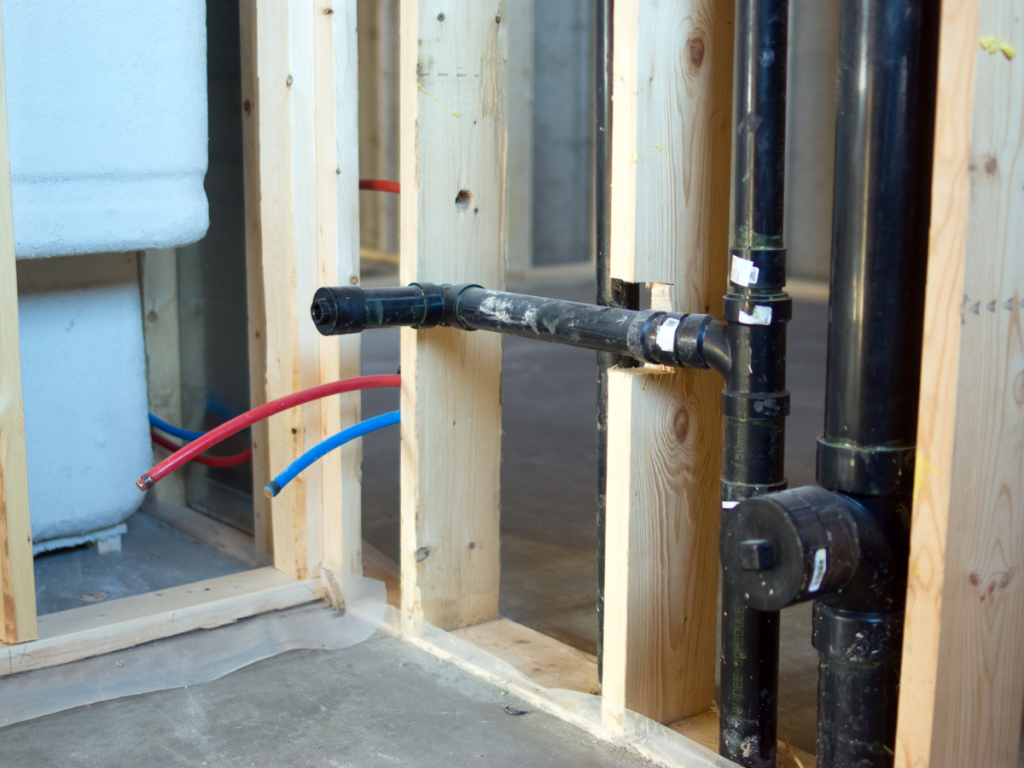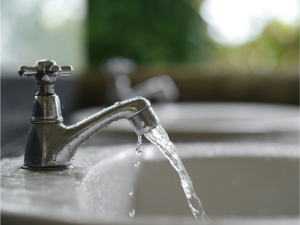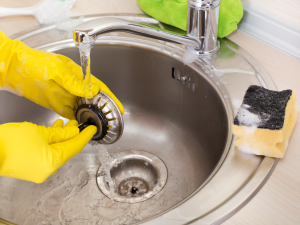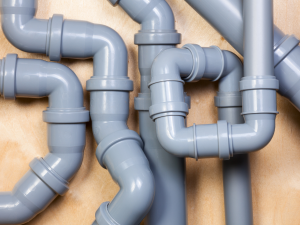Plumbing is an essential component that needs to be carefully considered for residential construction or home restoration projects.
Rough-in plumbing is one of the most essential parts of plumbing installation since it creates the foundation for the entire system.
DIY enthusiasts, contractors, and homeowners alike should understand this stage of plumbing because it enables them to make good choices, communicate clearly with contractors during projects, and ensure their plumbing system fits their needs.
To help out, we’ve put together this post to go over everything you need to know about this stage of plumbing, including its function, vital parts, and other important considerations. If you need a plumbing specialist for a new project or if you want to learn more, contact our team at Clover Contracting today!
What is Rough-in Plumbing?
This type of plumbing focuses on putting in the main water supply lines, drain lines, vents, and more that connect the fixtures in a building. It sets the foundation for where specific fixtures can be placed in the building and ensures that the right connections are made for proper water supply and draining.
As a result, it’s one of the first and most essential steps in the early stages of construction before the drywall is put up. Much like the other stages of plumbing, for example finish plumbing, a range of vital parts are required for a plumbing rough-in that will create the basis for a fully working system.
While these parts are needed to guarantee adequate drainage and water supply wherever you need it.
Key Components in Plumbing
While you don’t need to be an expert, if you want to renovate your home, it’s helpful to know what these parts are. This can help you make informed decisions during construction, communicate with your plumber more effectively, and ensure that everything complies with regulations while meeting your needs and wants.
Water supply pipelines
As the name suggests, these pipes move water from your home’s water supply to the faucets and shower heads.
Choosing the suitable pipe material for water supply lines is essential to prevent as much water damage as possible for a long time, especially in locations with high water usage, such as a bathroom plumbing rough-in. Solid metals and plastics like PEX (cross-linked polyethylene), copper, and PVC are often used.
Drainage and sewer pipe lines
Drain lines transport wastewater from the drains to your public sewer system, where it can later be purified.
Drain lines are typically made of PVC or ABS – acrylonitrile butadiene styrene – pipes because of their durability and chemical resistance to wastewater. Pipes must be installed at the right angle and with proper venting to ensure adequate drainage and avoid clogs.
Tap and fixture connection points
These are where the water supply and drain lines for sinks and showers connect. Since each fixture is used differently, outlets are placed carefully to avoid contamination and ensure an accessible water supply.
These connections often have an added pipe to vent out gasses and excess moisture. Like the other parts of rough plumbing, these connections also need proper placement for practical use later on.
Why is This Phase Important?
This initial stage of plumbing plays a crucial role in establishing your system’s efficiency and overall functionality. It sets the foundation for the correct installation of pipes, drains, and fixtures so that water moves easily while the waste is disposed of.
By ensuring proper early plumbing installation, you are guaranteed a dependable and well-designed plumbing system that will serve your home effectively for a long time.
Proper building code compliance
To guarantee safety and hygiene, plumbing systems must be regulated by building codes. Sticking to these regulations is needed for rough-in plumbing since it assures compliance with specifications with drainage and ventilation. Following these codes avoids any penalties or plumbing issues later on.
Easy modifications for future renovations
Roughing in plumbing during the construction phase allows room for adaptability and renovations to the plumbing system. This installation method supplies entry points and junctions that can be conveniently reached and altered, eliminating large-scale structural alterations or disturbances.
Correct water flow and drainage
One key thing that emphasizes the importance of rough-in plumbing is how it helps ensure water flows and drains correctly. Efficient water flow is critical in daily life, especially in providing water to fixtures and appliances.
Additionally, it allows adequate drainage by properly angling drain pipes and allowing for venting. Together, these help prevent clogs and backups in the pipework.
Plumbing Considerations for a Rough-in
There are several essential things to remember when it comes to the rough-in phase. Every choice, from the layout to the suitable building materials and fixtures, affects how efficiently your plumbing system works.
It’s also essential to consider aspects like local building regulations, your family’s requirements, and any potential additions or renovations you might have in the future.
Design and layout of your home
Using the space behind the walls is another crucial factor in rough-in plumbing. All pipes must be arranged efficiently for proper water supply and drainage and to make it easy to access them for maintenance.
Architects and plumbers will already have an idea of the most efficient layouts. However, as a homeowner, you can still gain valuable knowledge and advice by contacting experts like our team at Clover Contracting.
Planning for future changes
If you have – or expect to make – renovation plans in the future, it’s much easier to adjust and add to them by designing an adaptable and readily accessible plumbing system.
But as always, seeking advice from experts is the best choice. By doing this, you can ensure that your plumbing’s functional and flexible enough to meet your family’s needs.
For any stage of plumbing, call Clover.
Homeowners starting a building or remodeling project should have a basic understanding of this early plumbing phase of and why it’s necessary.
At its simplest, it lays out the foundation needed for a plumbing system allowing it to last for a long time while still allowing upgrades. Knowing the essential parts of this early plumbing stage can help make communication with your plumber easier and ensure your needs are met.
If you need advice or professional help with your plumbing, just contact our team at Clover Contracting.








